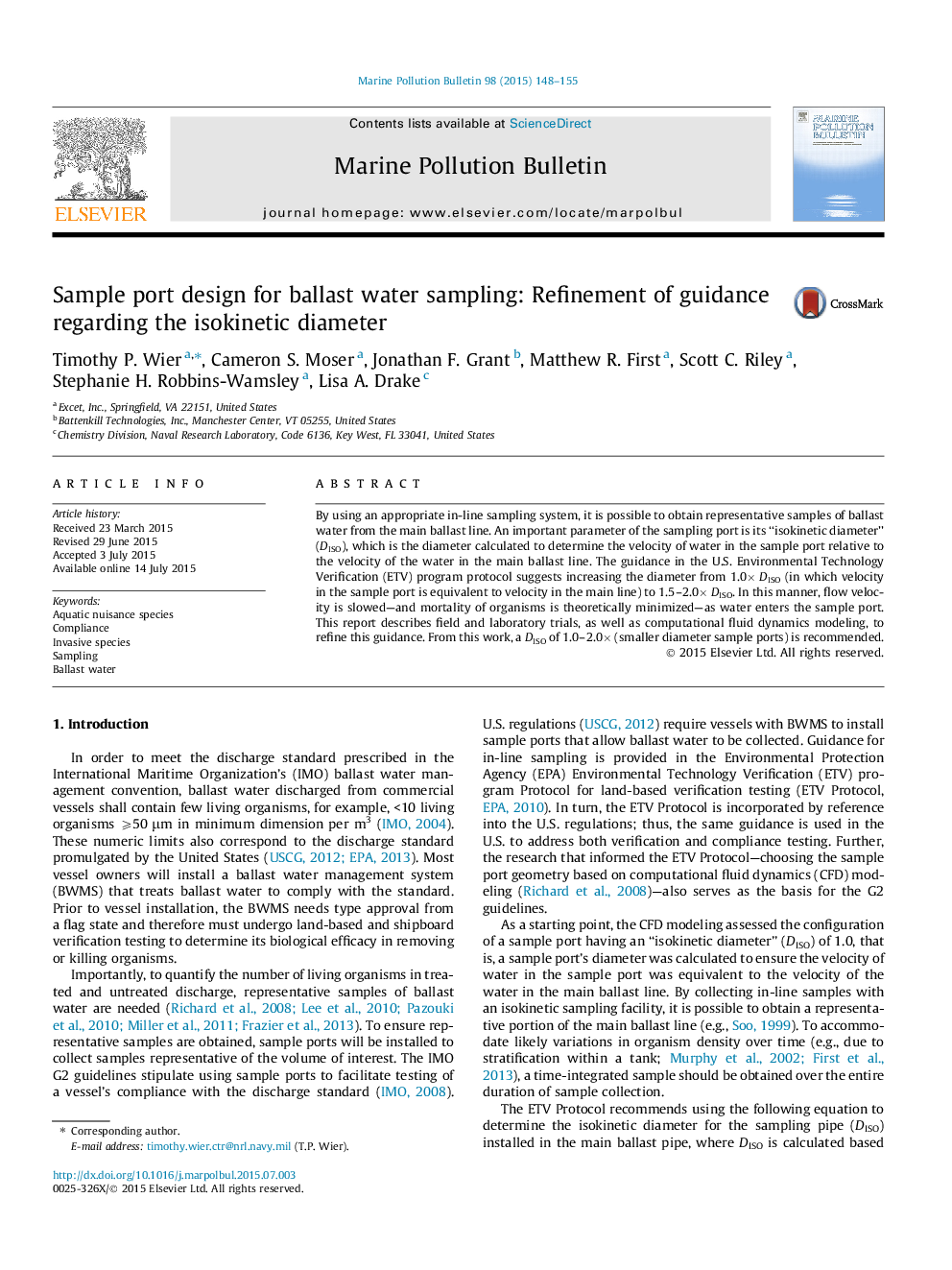| Article ID | Journal | Published Year | Pages | File Type |
|---|---|---|---|---|
| 4476705 | Marine Pollution Bulletin | 2015 | 8 Pages |
•Sample ports are used in ballast water sampling.•Currently, sample ports should sample at lower flow velocity than the main velocity.•We use computational fluid dynamic modeling and experiments to expand guidance.•Sampling at a flow velocity equal to the main flow velocity is now recommended.
By using an appropriate in-line sampling system, it is possible to obtain representative samples of ballast water from the main ballast line. An important parameter of the sampling port is its “isokinetic diameter” (DISO), which is the diameter calculated to determine the velocity of water in the sample port relative to the velocity of the water in the main ballast line. The guidance in the U.S. Environmental Technology Verification (ETV) program protocol suggests increasing the diameter from 1.0× DISO (in which velocity in the sample port is equivalent to velocity in the main line) to 1.5–2.0× DISO. In this manner, flow velocity is slowed—and mortality of organisms is theoretically minimized—as water enters the sample port. This report describes field and laboratory trials, as well as computational fluid dynamics modeling, to refine this guidance. From this work, a DISO of 1.0–2.0× (smaller diameter sample ports) is recommended.
